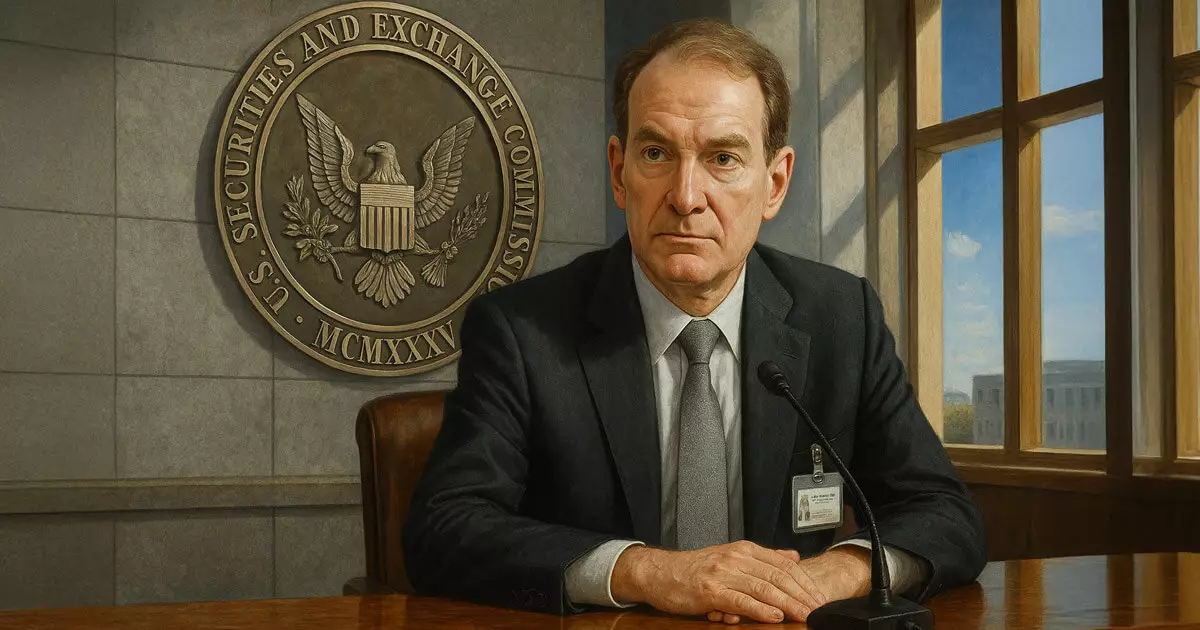In a landmark address at the SEC Speaks conference, Chairman Paul Atkins has signified a radical transformation in the previously rigid stance of the U.S. Securities and Exchange Commission (SEC) towards the ever-evolving world of digital assets. His remarks underscored a growing recognition: innovation should not be seen merely as a threat, but rather as a powerful opportunity for growth and development. The exasperating “shoot-first-and-ask-questions-later” enforcement mentality is being replaced with a more collaborative approach that acknowledges the potential benefits of integrating digital assets into our financial ecosystem.
Atkins’ declaration is not just a strategic about-face; it represents a necessary reset. For years, the crypto sector has languished in what can only be described as regulatory limbo, characterized by vague guidelines and onerous enforcement actions. The SEC’s method of dealing with crypto firms has often seemed counterproductive, stifling progress while simultaneously driving innovation underground. By recognizing this pattern of damaging enforcement and committing to fostering a more open relationship with the industry, Atkins is taking a brave step toward healing the rifts that have too long divided the regulatory framework and the cryptocurrency markets.
Encouraging Cooperation Over Codification
One of the most encouraging aspects of Atkins’ speech is his commitment to transparency. The acknowledgment that the SEC’s past practices have eroded trust within the crypto community is crucial. Moving forward, the SEC aims to provide clearer guidance, signaling a shift toward openness and cooperation. The intent to roll out formal rule proposals tailored to the nuances of the crypto industry is a pivotal move in rectifying the previous rigid approaches that left many companies confused and apprehensive about compliance.
Atkins’ directive to engage collaboratively rather than adversarially speaks volumes about a new ethos at the SEC. The Advisory FAQ updates give crypto businesses a much-needed lifeline, enabling them to operate with clearer parameters. This approach could very well foster a more innovative financial environment, reducing costs and enhancing trust among various industry stakeholders.
A Vision for the Future
Looking beyond immediate regulatory changes, Atkins paints an ambitious long-term vision for the incorporation of digital assets into a comprehensive financial structure. The possibility of allowing SEC registrants to both custody and trade securities and digital assets under one regulatory framework is not just innovative; it’s essential for cultivating a “super-app” future in financial services. This unification could potentially streamline processes and enhance user experiences across a previously fragmented landscape.
Additionally, Atkins’ decision to dissolve the SEC’s Strategic Hub for Innovation and Financial Technology (FinHub) reflects a recognition of its limitations. Instead of maintaining a narrow focus that often got bogged down in enforcement issues, embedding innovation priorities throughout the agency demonstrates a commitment to embracing the vast potential of technological advancements in finance.
The implications of these shifts are profound. Companies in the digital asset space—as well as traditional financial firms—can now harbor hope that the regulatory environment will foster growth rather than impede it. With Atkins at the helm, there’s a burgeoning opportunity for a renaissance in the financial sector, providing it can capitalize on the winds of change directed by the SEC moving forward.


















